Exploring New York’s Industrial Past in "Cathedrals of Industry"
Join photographer Michael L. Horowitz for a journey through 50 years of photographs!


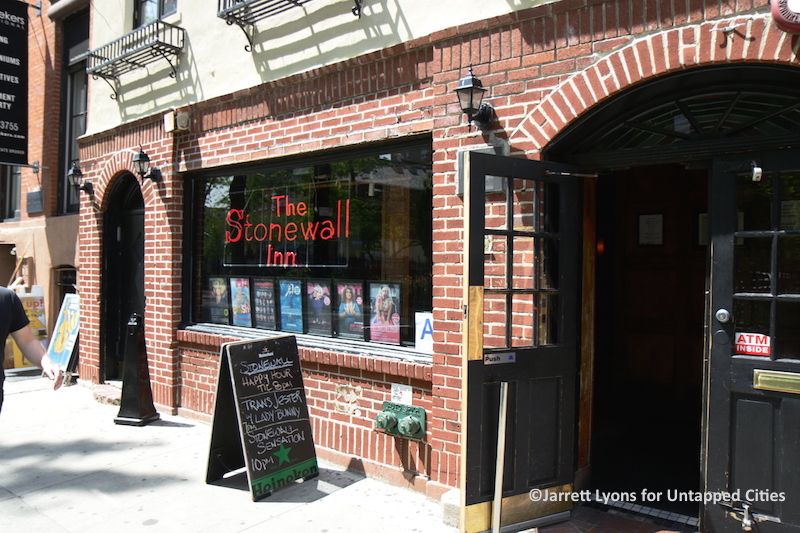
June marks one year since the Stonewall Inn was designated an individual New York City landmark within the historic district of Greenwich Village. While the Stonewall Riots were a dramatic historical moment for the LGBT community, the movement did not start or end there. There were many smaller events and locations that gave exposure to the LGBT community in spaces used to socialize, make art, and mobilize.
Each of the buildings included in this list is a designated individual landmark and are protected as historic spaces by virtue of being located in an historic district. Historic designation reports do note an area’s distinction in LGBT history, particularly if the district was designated after the LGBT movement became prominent. The designation of the Stonewall Inn was particularly notable from a social and historical perspective, since it was generally acknowledged that the site was not architecturally or aesthetically distinguished – a clear gesture to landmark the history behind the building.
In honor of Pride Month, we highlight ten notable LGBT landmarks and sites in New York City:
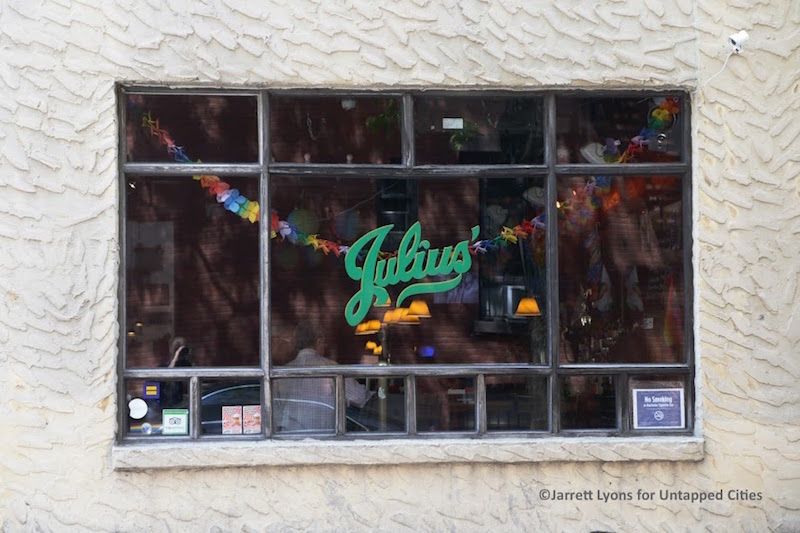
Julius’ bar, a few blocks away from the Stonewall Inn, identifies itself as the oldest gay bar in New York, though it hasn’t always been a haven for gay people. In 1966 activists staged a “sip-in” to protest harassment from bartenders and their refusal to serve homosexuals. The protest effectively established gay bars in New York. Governor Andrew Cuomo recommended Julius’ be added to the State and National Register for Historic Places this year. Julius’ historic significance is not mentioned in the Greenwich Village Historic District designation, which was adopted a few months before the Stonewall Riots.
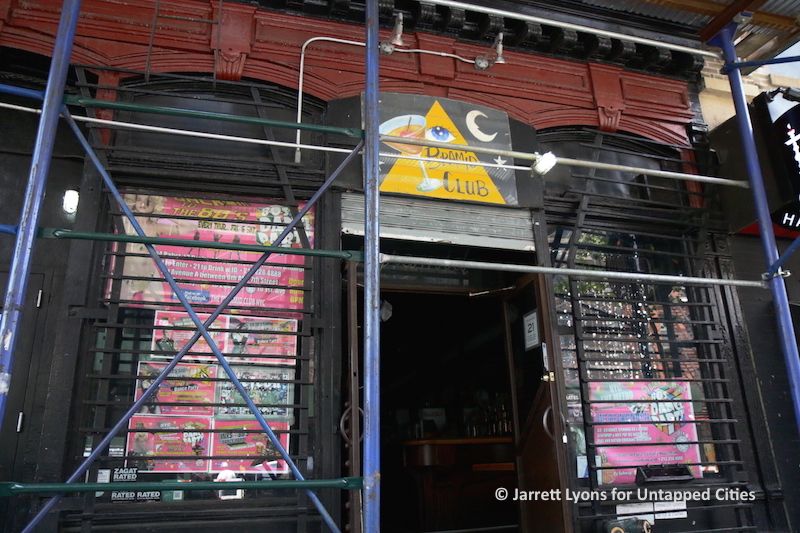
The Pyramid Club in the East Village, where drag aesthetic developed in the 1980s, holds a similarly important place in LGBT history. However, the Landmarks Preservation Commission denied a past attempt to designate the Pyramid club as “the first drag landmark.”
When the Lower East Side district was designated historic in October of 2012, the Pyramid Club’s designation as a historically significant space was included in the report: “[101 Avenue A] became the Pyramid Club in 1979, a defining club for avant garde music in the 1980s. It hosted such performers as Ann Magnuson, and an early benefit concerts for AIDS victims.”
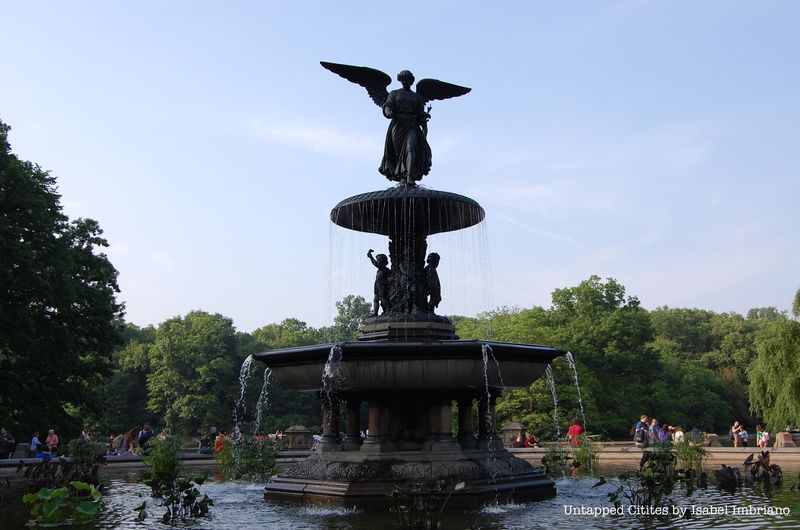
Besthesda Fountain, the famous Central Park Fountain, was designed by sculptor Emma Stebbins in the 1860s while she was living in Rome with her lover. The two were part of a movement of lesbian artists in the late 19th Century who, according to the Landmarks Commission, formed a group of “female jolly bachelors.” They were among the first generation of women to forge a career in the arts and to form same-sex relationships,” continues the Commission in its LGBT History Guide. Stebbin’s was not acknowledged as a lesbian in the 1974 report Central Park Designation Report.
Other Central Park locations played additional notable roles in LGBT history, which you can read about in our previous article, “A Gay ol’ Time in Central Park.”
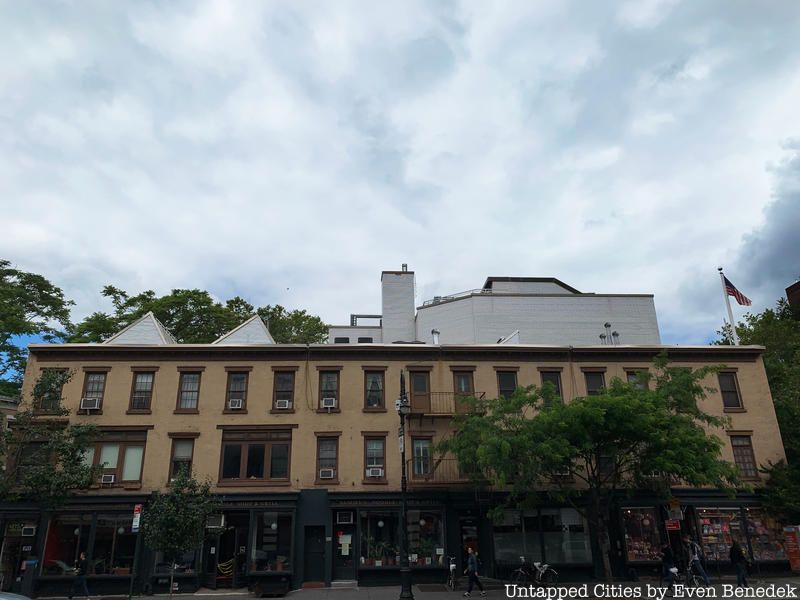
Murray H. Hall was a prominent Scottish-born Tammany politician who lived at 147 Sixth Avenue within the Greenwich Village Historic District until his death in 1901. Upon his death, it was revealed that Hall’s gender assigned at birth was female. The building was renumbered when Sixth Avenue was extended south and can now be found at 457 Sixth Avenue. The apartment is above what is now Sammy’s Noodles, a popular Chinese restaurant.
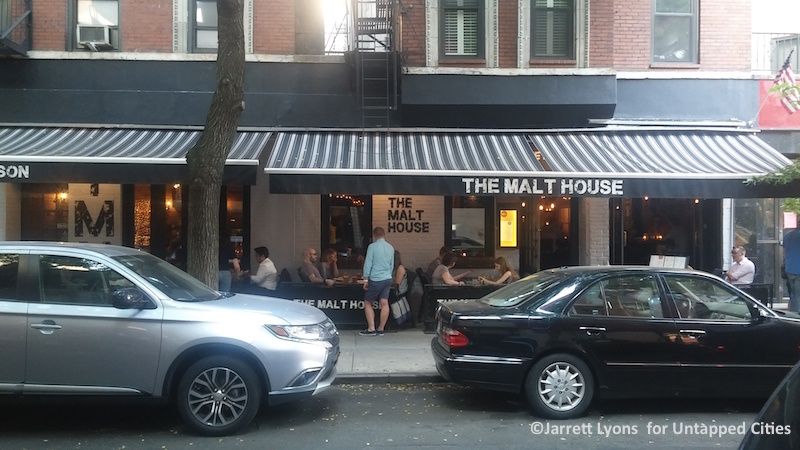
Various locales throughout the South Village Historic district played a part in lesbian history in Manhattan, according to the Landmarks Preservation Committee LGBT History Guide. Early lesbian-owned or frequented nightlife spots in provided a space to discreetly meet. Portofino’s in the South Village is the Italian restaurant where Edie Winsor met her future wife Thea Clara Spyer. Other historically lesbian spaces included Eve Addam’s Tea Room, which was run in the 1920s by a lesbian. The tea room displayed a sign which read “Men are admitted but not welcome.”
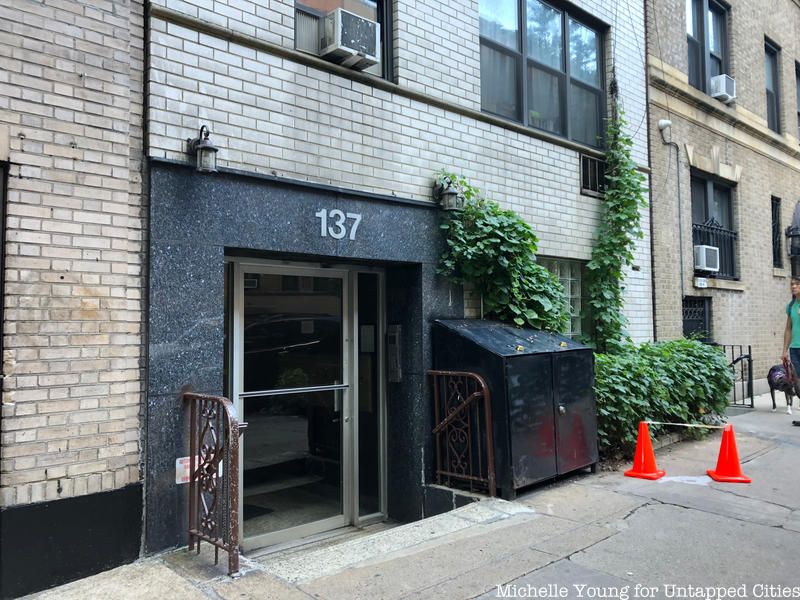
James Baldwin, the African-American author and social critic, lived in residences in the West Village Historic District and the Upper West Side/Central Park West Historic District at different points in his life. Baldwin lived at 81 Horatio Street in the West Village in the late 195os through the early 1960s. In 1965, Baldwin bought a row house at 137 W 71st Street. Baldwin’s novels caused controversy for their homoerotic content and exploration of racial identity.
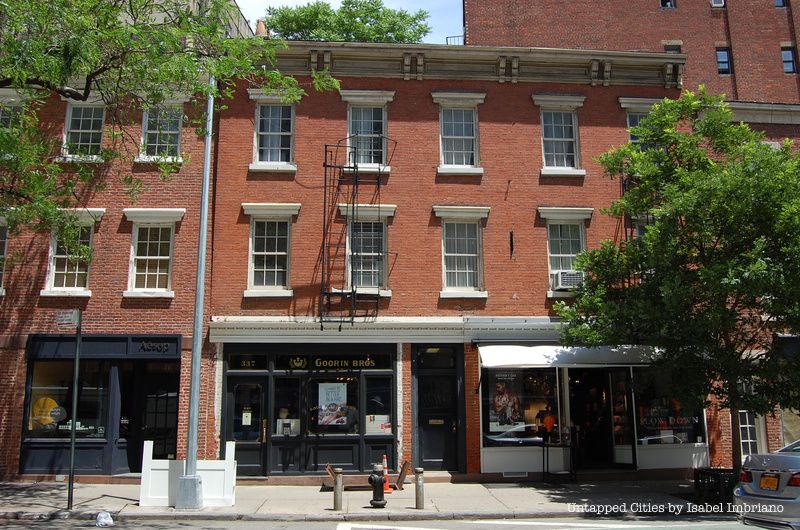
Like Baldwin, “A Raisin in the Sun” playwright and member of lesbian rights activist Lorraine Hansberry had lived in both the West Village and Upper West Side. Downtown Hansberry lived at 337 Bleecker Street before purchasing a row house at 112 Waverly Place after the success of “A Raisin in the Sun.” There she met her partner Dorothy Secules who was a tenant in the building.
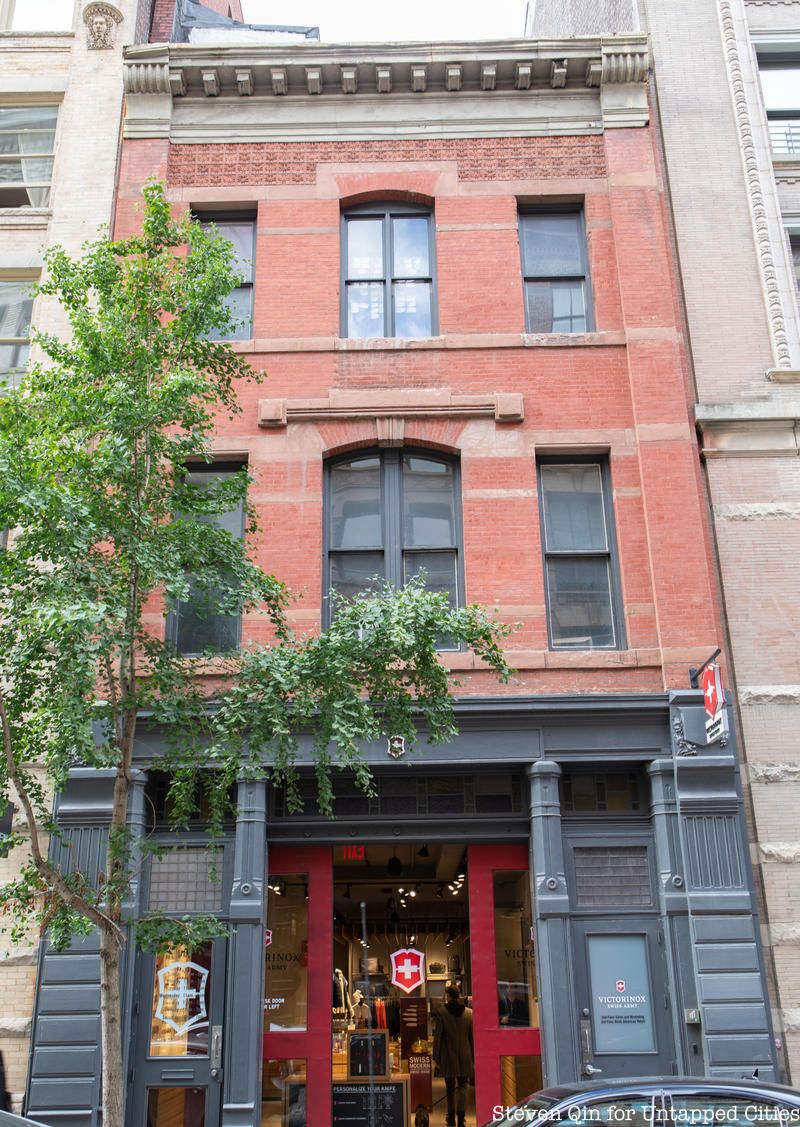
The Gay Activist Alliance was housed at this former firehouse at 99 Wooster Street in the SoHo-Cast Iron District. The alliance mobilized and lobbied for gay civil rights. Their famous tactic, “zap” actions, were direct actions intended to garner media attention for their causes. The Gay Activist Alliance Firehouse became a kind of community center, hosting meeting and parties while it was housed there. While the firehouse at Wooster street is listed specifically in the historic district report as a place of significance, it is not listed for its LGBT significance.
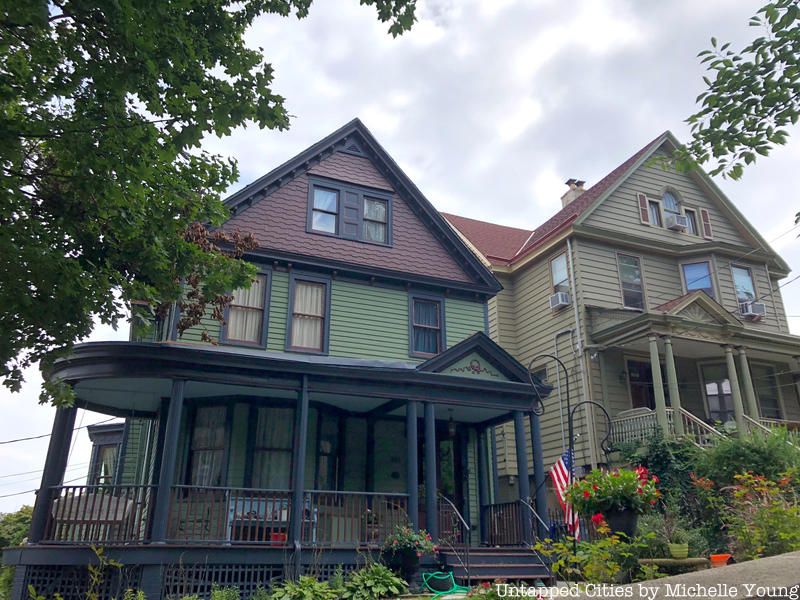
Radical feminist and and one-time New York State Poet Laureate Audre Lorde residence can be found in The St. Paul’s Avenue/Stapleton Heights Historic District at 207 St. Paul’s Avenue. Lorde lived here from 1972 to 1987 with her partner, Frances Clayton and Lorde’s two children. This fact is included in the district’s 2004 designation.
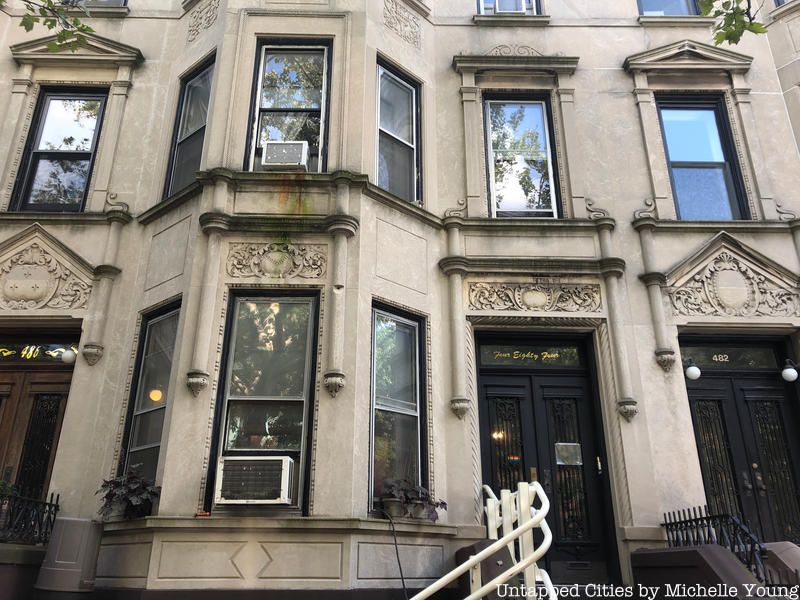
The Lesbian Herstory Archives, a research facility/community center/museum, is located in the Park Slope Historic District at 484 14th Street in Brooklyn. The Archives were founded in the Upper West Side Apartment of Joan Nestle and Deborah Edel and moved to the Park Slope location from the Upper West Side in 1993, which explains why it’s not listed in the 1973 designation.
More LGBT landmarks could be found here. Next, read more stories about NYC’s history in the LGBT movement on Untapped Cities.
Subscribe to our newsletter